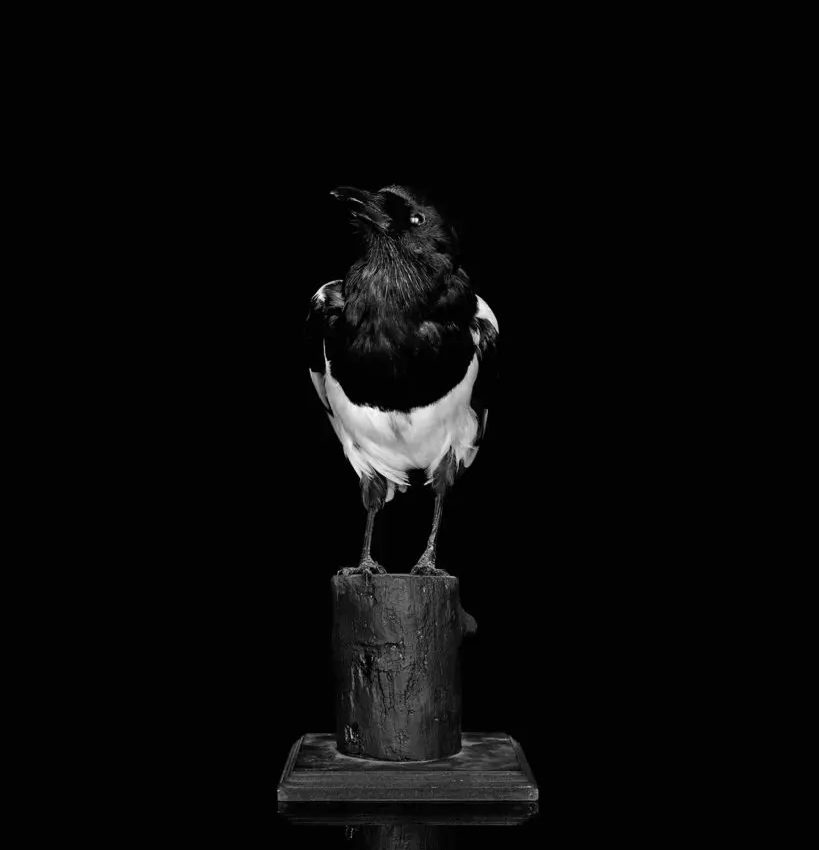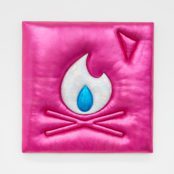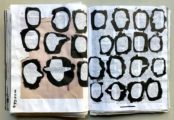Sarah Jones’ photographs cast her subjects into a void: the photographic night – a quiet, unsettling space, a pause in time.
Ahead of the opening of her solo exhibition Hall of Mirrors at Maureen Paley, she discusses the fluidity and fixity of photography, staged environments and her interest in classical subjects.
Your latest body of work nods to Le Sang d’un Poète (The Blood of a Poet). You’ve referenced Cocteau’s trilogy before. What do you find interesting about his work and these films in particular?
I’m interested in the way Cocteau used mirrors and windows as portals into other worlds. There’s a kind of slipperiness, which has a relationship to the history of photography and photography’s historic relationship to the real and the imaginary. I first saw the films, as perhaps many artists do, during my undergraduate, which was in contemporary dance and fine art. I think the way Cocteau worked with his actors and the idea of cinematic space was what initially drew me in, as well as the way he talked about meaning never being fixed.
With these new works I started looking at The Blood of a Poet again, among other things – Against Nature by [Joris-Karl] Huysmans, and Lars von Trier’s Melancholia – especially in terms of doors and screens and mirrors. Reflections have been in my work for a number of years, for example, in my diptychs, the negative is sometimes flipped so that you’re not entirely sure which is the actual image.
Also, in the film, the artist/poet sees everything through a keyhole, which made me think about photography – the eye, the lens, and vignettes – but it’s more about engaging with a certain sensibility than a direct reference.
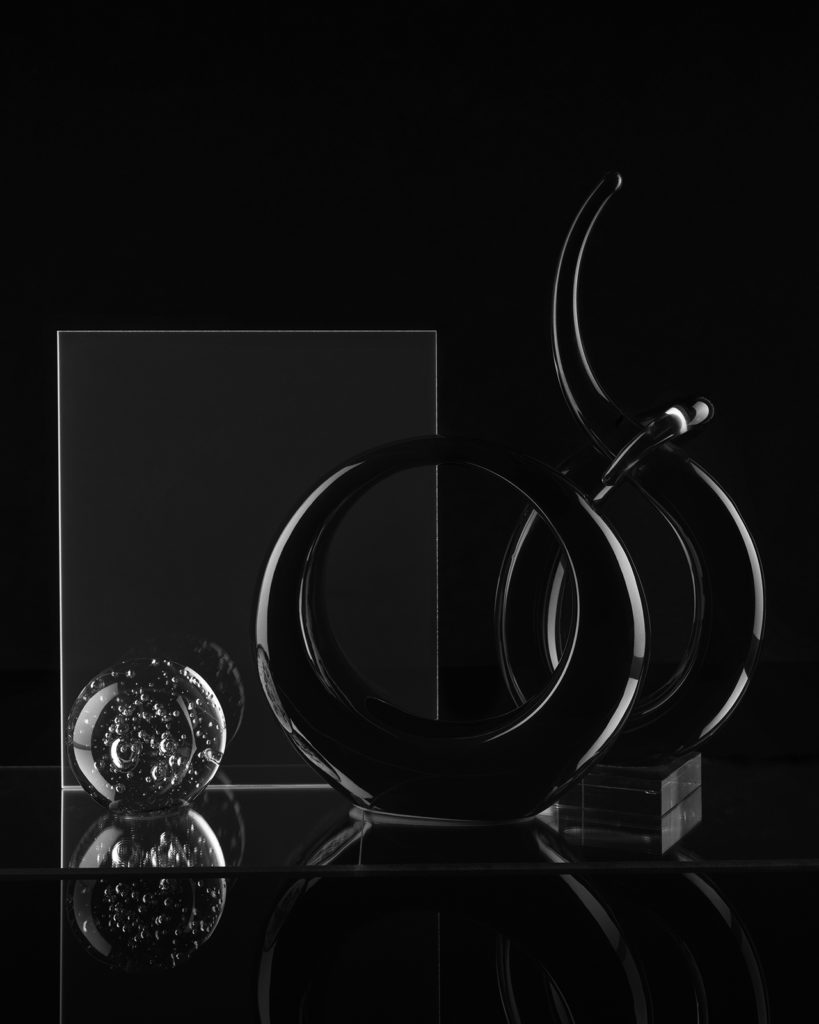
Why did you decide to study contemporary dance and fine art, and how did you end up focusing on photography?
I’ve been thinking about that over the past few years because the two worlds used to seem so separate to me. I didn’t really find myself in the theatre world, and when I used to paint, I found I was painting photographically. Photography and printing can be quite solitary, which I think suited me more. I continued making photographic work, and then went to do an MA in Fine Art at Goldsmith’s. When I look back on my early photographs of the three young women in rooms, the way I thought and dealt with those images was almost as if it were a stage setting, even though it was a domestic environment, and the way they moved through the space was quite dance-like and choreographed.
What do you enjoy about photography as an artistic medium or tool?
I’m really fascinated by the history of photography, its relationship to painting, and how it can be, at once, in a family album, a form of documenting, an archive and an artistic tool. Photography has a fluidity, it is magical and alchemic, but it also has a fixity about it. I find it interesting that there has to be something in front of the camera for there to be an image, which sounds obvious, but it’s this attachment to a reality, and seeing how I can stretch that relationship, how it might be elastic, that interests me. I’m not a writer, but sometimes it feels like I’m trying to put all these sentences or stanzas together to write the photograph, in the sense that the subjects I photograph are what they are, but they also have a life of their own.
I have developed ways of working, which have enabled me to think about certain things, such as frontality, quite classical ideas around composition and also life scale as a key aspect, which is quite peculiar in photography, trying to enlarge something to what appears to be life size. There are so many things at play. There are a lot of cross-references in my work and I don’t generally find it helpful to think in terms of series. Having said that, just before this show, I made a body of work around the cabinet of curiosities and the idea of the photograph as a cabinet, the way it allows you to gather and collect things and re-present them as a vision of the world. Those works followed on from the rose gardens that use the “day for night” cinematic technique, which reduces the depth; it’s only the front that gets lit and everything else falls away, which is why you get a blackened space. I’ve been trying to figure out the relationship of a painted black surface to the photographic black surface.
And your photographs are matt sealed.
Yes, so the surface becomes sort of unified. Materially speaking, it becomes something other than photographic paper. It’s about the materiality of black.
What’s your process for conceptualising a new image? Are you led by an object, a feeling, an idea?
Ideas comes from different places and one work often leads to another. The process starts with what I’m currently researching and the things I see and photograph on my phone, which serve as notes or sketches that I might go onto develop either in the studio or outside. Another part of it is looking for locations, so with the urban rose gardens it was about the concept of cultivated nature, how the gardens are public and made for display, or for enjoying nature in a certain way.
Most of the objects I photograph are everyday things like vases, glass spheres and decorative objects. I like how they take on new meanings through photography, but they still are what they are.

How often does the idea change when you’re shooting? Are you ever surprised by what you’ve captured?
That’s an interesting question. I tend to have an idea of what I want to photograph, like a horse. I’d always wanted to photograph a horse because it’s a classical subject, and I wanted to see whether photography could bring anything else to it. Also, how to convey, photographically, the presence, the scale of a horse – is it even possible? That photograph came about because the household calvary phoned up the RCA and asked whether anyone wanted to photograph the horses. For me, it was very much about the surface: the shine of the horse’s highly groomed black coat and then the matt surface of the image, and the slight confusion and collapse between those two things. All the calvary horses are trained to be used to lights and noise, to be on display, which connects back to the rose gardens, and before that, the couches that I photographed during my MA.
So, ideas suggest themselves and it often takes a while to get to where I think I want to go, but a lot of the work comes through the making and the editing out. During that process, the work kind of looks back at you. I’m always surprised by how different things look in a photograph, and I guess that’s what keeps me making work.
How do you decide what size an image should be? Do you consider the exhibition space or is it that you feel a particular image needs to be a certain size?
It’s the latter – it just makes more sense to me. I work with 5×4, sometimes 5×7 or 10×8, and with the 5×4 I still use polaroids, so you have this intimacy with the subject, but it’s also about trying to figure out the composition. The photographs become a contact sheet and then scans, which we print from. I also make cheap proof prints to test out the scale. I am fortunate to have the opportunity to show these larger scale works, but for me, the size is so much part of the image and the encounter.
Can you tell me more about the concept of the “photographic night”? Is that the right term?
Previously, I’ve always referred to it as a kind of inky darkness, or I’ve referred specifically to the “day for night” technique, which suggests the idea of photographic black or a void, of time and space conflated, something which isn’t fixed. The term “photographic night” came about in writing the press release with the gallery for my latest show, and I really liked it. It makes me think about how the imagination plays on something that we know might not be there. Photographic night is a fictional space, made purely from the exposure on the film, and specifically from the lack of light.
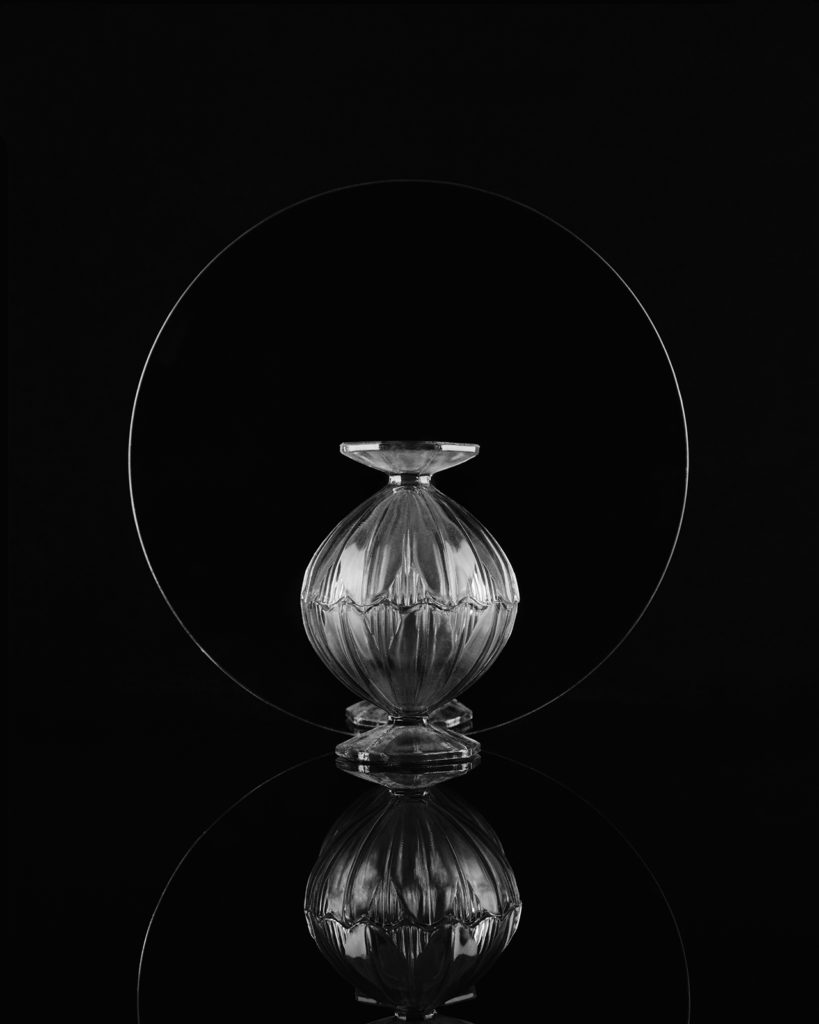
In your latest show, you’ve made images of two birds, a magpie and a mynah bird. How do they relate to themes you’re exploring?
They’re quite new as subjects to me. I’ve had the mynah bird in the studio for years, and I’ve been trying to figure out how to photograph it or where it might sit within my work, but the magpie is a recent acquisition from eBay. I liked the idea that it’s already been preserved before it’s photographed, but it took a while to figure out how to shoot it. I really loved the line of green along the tail, so I was originally photographing it side on, and I tried lots of different backgrounds. Then, I noticed the photographic light in its eye in a polaroid, which reminded me of when I photographed the black horse. In the photograph, its eye had turned blue where the flash had bounced off the back of its retina. With us, the retina turns red. With the magpie image, the flashlight reflected in its eye tells us that it was made in the studio, which is another layer of artifice and reflection. I also began to think of the magpie as a camera, as it’s drawn to objects that catch the light.
What appeals to you about revisiting classical art subjects such as flowers or horses?
Generally, for me, I think it always begins with a question. For example, I wondered what would happen if I turned my camera on the psychoanalyst’s couch, this private, ritualistic space, where histories are told. With classical art subjects, there’s also a strong sense of familiarity. People will have seen paintings or other images of the same subject, which presents a challenge for me making work now. What more can be said, if anything?
“Sarah Jones: Hall of Mirrors” runs from 24 July to 29 August 2021 at Maureen Paley, 60 Three Colts Lane
London E2 6GQ. For more information, visit: maureenpaley.com
Featured image: Sarah Jones, Magpie (Camera) (I), 2021. © Sarah Jones, courtesy Maureen Paley, London

Millie Walton is a London-based art writer and editor. She has contributed a broad range of arts and culture features and interviews to numerous international publications, and collaborated with artists and galleries globally. She also writes fiction and poetry.

